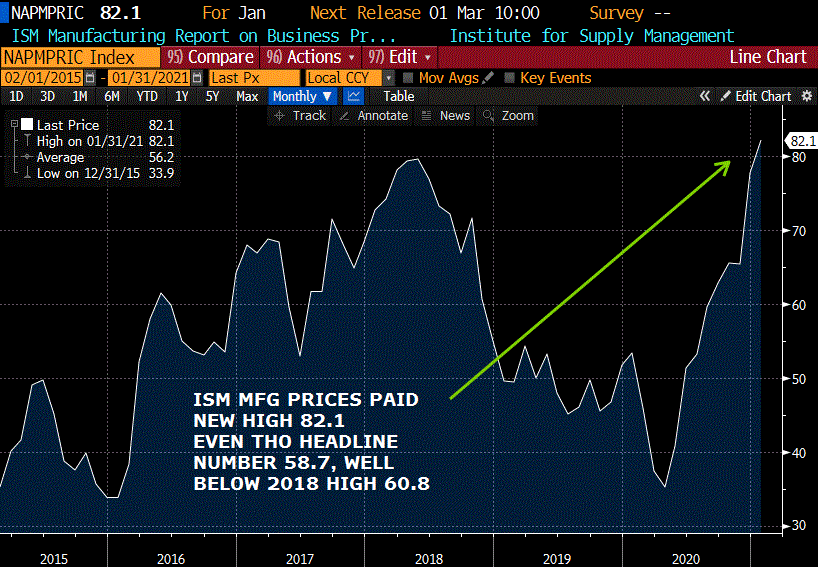Imbalances
February 2, 2021
–Yesterday’s 3 month libor setting was a new record low 19.5 bps, underpinning strength in near ED futures. EDH1 settled 9984 with EDM1 as the peak point on the curve, settling 9984.5. Tens ended at 1.066, down 2.5 bps on the day. Although the headline ISM Mfg number was weaker than expected at 58.7 (the high in 2018 was 60.8), the Prices Paid component surged to a new high of 82.1, eclipsing the 2018 level. The data trend has generally been for stronger prices, which the Fed is promising to look past, having elevated the labor market to its top priority. Minutes from South Korea’s central bank meeting in January show an interesting contrast with the US Fed. From Reuters, “Minutes of the last meeting showed the majority of the seven board members were worried about the red-hot property market as well as surging stock prices, especially as household income and job market remained sluggish. ‘As the recent rise in asset prices is accompanied by a significant increase in debt, there is a high possibility that risk of financial imbalance is accumulating’, said one policymaker…” Compare to Powell’s presser: housing strength is one-off; not considering margin increase on stocks; large debts are more easily serviced at these low rates.

–The reddit crowd appears to have met its match with the silver market. After popping to a high of 30.35 in SIH1 yesterday morning, it now trades 27.80. The August surge above 30 was followed by a move to 23 by late September. Sure I am personally long silver, but with a preponderance of derivatives, this is no easy squeeze.
–I was examining open interest in TY yesterday in preparation for the roll, and noticed that aggregate OI has fallen quite significantly since Fed easing associated with the virus. In Q2 2019, TY OI was around 4 million, now it’s 3.4 to 3.5 million, in spite of huge treasury bond supply. Upon looking at all contracts, OI has also seen large declines in TU and FV, but has climbed to a new high in the Ultra TenYr (UXY) and has also risen in the US contract. I’ll post charts on a separate note. Sort of fits the Fed and inflation narrative so it shouldn’t come as a surprise: Short contracts are constrained by the Fed’s ‘low funding for years’ promise, so no need to hedge, while long dated maturities are useful for hedging inflation.


